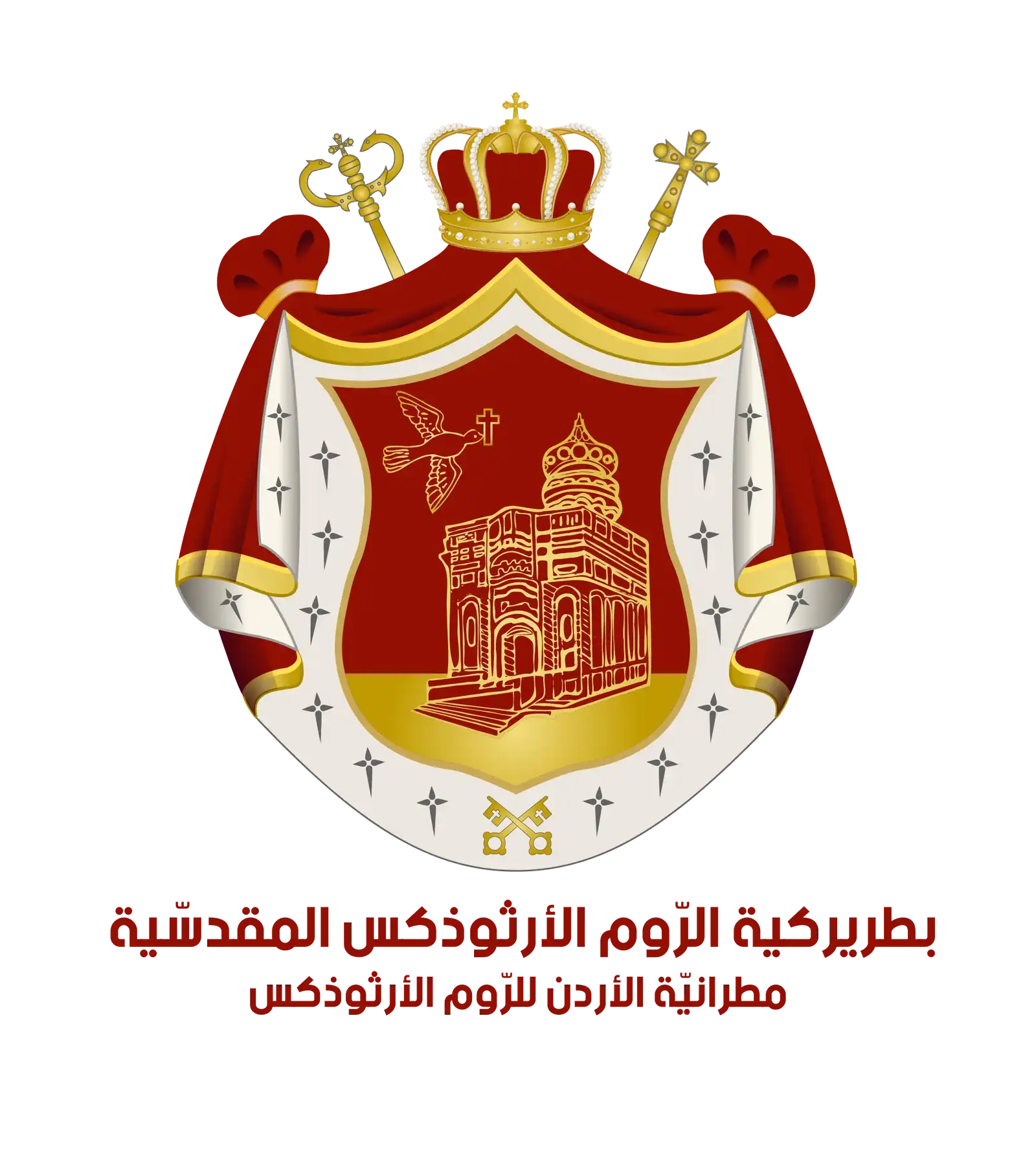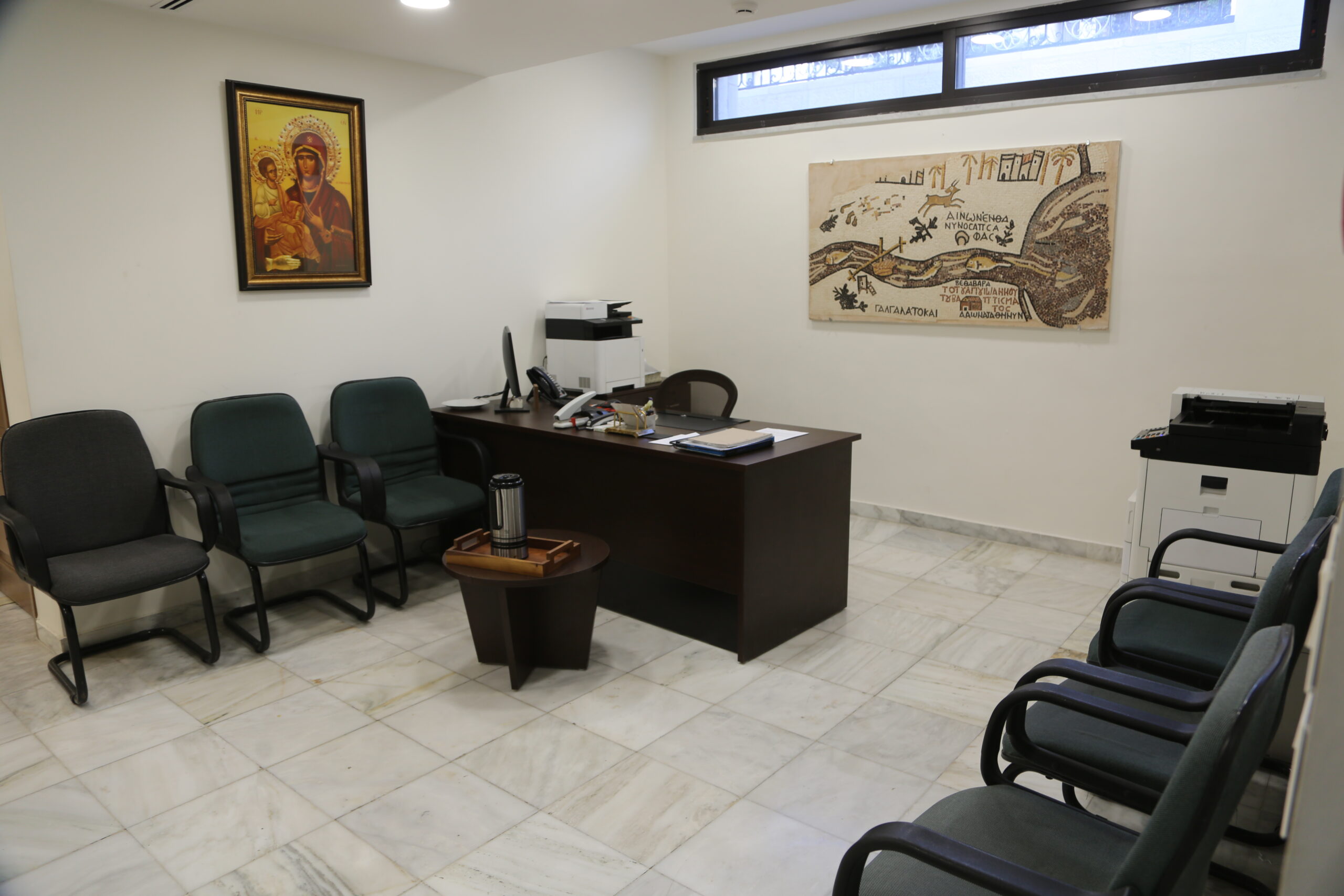The Orthodox Archdiocese of Jordan
Vision
To provide spiritual care for the church members for the salvation of their souls and to actively contribute to strengthening the Christian presence in the homeland.
Mission
To establish believers on the rock of Orthodox faith through the liturgical life of the church and its various institutions.
Objectives of the Archdiocese
- Encourage participation in the liturgical life of the church and its sacred sacraments.
- Operate within a framework based on sound administrative, legal, and financial principles to restore the trust of parishioners in their church and its institutions.
- Provide and utilize all ecclesiastical, spiritual, and legal means for the Orthodox revival in the church and enhance the sense of belonging to the church and the homeland.
- Activate and leverage the skills and energies of parishioners to serve the church and the local community.
- Coordinate and organize joint efforts and communication between the Patriarchate and its spiritual members in the Hashemite Kingdom of Jordan.
-
Administrative Affairs of the Archdiocese
-
Pastoral Affairs of the Archdiocese
-
Service Affairs of the Archdiocese
-
The Archdiocese benefits from the expertise of








The History of the Bishop
In 1944 the only church in Amman was the Church of the Devoted Manifestation made of milk, and Father Solomon Omari’s triangle of Mercies served in this church. There was no bishop in Amman at the time. The parishioners came from Jerusalem in some Sundays for one or a few days to hold the ceremonial divine Mass and return to Jerusalem thereafter.
In 1948, the Palestine Nakba took place and many Palestinians began migrating to eastern Jordan. Meanwhile, the Arab Orthodox Renaissance Association was collecting donations for the construction of a church that manifested the Saviour, but construction faced several difficulties as strong torrential water hindered construction and vandalized the materials used in it, but the construction work eventually took place.
In the meantime, Hanna Pasha al-Qasas was one of the jealous men on the church and its sons, and his relations with the parishioner who came from Jerusalem were excellent. They always visited him at home, and he always asked them to have a permanent bishop in Amman. After the great urgency and urgency of the parish and their claims, Patriarch Finehtos in 1955 appointed the Triangle of Mercies of Archbishop Aristopholos in Amman. Archbishop Aristopholos was a pastoralist with a beautiful voice, and the parish accepted and loved him and turned around her new shepherd. He was constantly visiting the parish homes to look after them, care for them and assure them of their conditions. At that time, he rented a house for him in the Jebel al-Luwaiba area, which formed the first headquarters of the Orthodox Roman Archdiocese in Amman.
Archbishop Aristopholos collaborated with parents serving the parish in Amman, such as Father Suleiman Amari and Father Yitzhak Kaila’s triangle of mercies, Father Ansetas Khoury’s triangle and Father Constantine’s Jerusalem Crimsch, by building churches and spreading in the Amman area.
In 1957, the Chamber of Deputies drafted the 1957 Greek Orthodox Jerusalem Patriarchate Law at the time of the then Prime Minister, Mr. Suleiman Nablus, but that law did not see the light of day. The House of Representatives was dissolved and martial law began to apply in Jordan. In 1958, the Greek Orthodox Patriarchate’s Jerusalem Law No. 27/1958 was promulgated, under which the Patriarchate and the Patriarchate operate to date.
The Triangle of Mercies was appointed by Bishop Simon Room, who was resident in Jerusalem. Patriarch Venetectus announced the construction of four churches in the Kingdom, the Church of St. Jorgius in Zarqa ‘a, the Church of St. Jorgius in Savout, the Church of the Holy Spirit in Ajalon and a church in the south of the Kingdom, and thereafter the cathedral of the mother of the God in Abdali, which was completed in 1962.
Meanwhile, the Triangle of Mercies Jerusalem of Archimendrite was a Jerusalem resident who visited Amman constantly to oversee the construction of churches. His sovereignty was established as Amman’s Bishop in 1967. He loved the parish in Jordan and the parish loved him and turned around him. He was a patriot who loved Jordan and was loyal to His Majesty King Hussein. He was elected patriarch in 1980. While serving in Amman, he purchased a lot of land to build churches and to invest for the parish service. At that time he was residing in a rented house for the cathedral of the Annunciation in Abdali.
The plot of land on which the Archbishop is currently housed belonged to Mr. Emile Scap, who donated it to Bishop Yuthourous for the construction of a church after his father served in Jerusalem, the Church of the Master’s Entry into the Temple. The land complementary to this land was purchased from its landowners. The Bishop’s House was built in 1983, and construction work on the Church of Master’s Entry began in 1988 until it was opened in 1990.
He was a sunbather in the Jerusalem Patriarchate and was a lieutenant of Patriarch Yuthurus, rising in priestly ranks until his sovereignty as bishop in 1999 and coming to Amman in 2000, where he began his service in Amman until 2018.
On 30 June 2018, His Sovereign Archbishop Hristoforos Akhdal officially assumed his duties as Jordan’s Orthodox Romanian Airport














